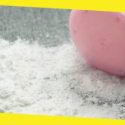Common Baby Food Mistakes

According to the American Academy of Pediatrics, you can begin introducing your child to solid foods at around 6 months old. If you remember, experts also recommend that it is until this age that you feed your child with breast milk exclusively. That is why we are sure of how exciting this milestone can be for both you and your little one.
You might have opted to prepare your child’s food instead of buying its pre-made counterpart. Or maybe you have some chosen brands as a stock for emergencies and busy days. But do you already have your plans and research laid out when the day finally arrives?
If you are making baby food yourself, you need something that will make the preparation faster and easier. This includes a device to puree and mash the ingredients for you. After all, children need help in chewing and digesting. You can choose from the selection of best blenders for baby food on CuteLittleDarling as a start.
But more than just preparation, you also have to be one step ahead and dodge all the common mistakes in feeding your child.
Mistake Number 1: Feeding Your Child Too Much Salt and Sugar
Since you are making baby food yourself, you now have the advantage to choose what to include in its contents. More than the main ingredients, you should also be aware of the food additives that you must avoid.
Even if you have swerved the sugar and salt in processed foods, you still have to monitor your child’s intake of them. There are sugars present in fruits, and you can still find salt in some natural food sources. As a guide, the World Health Organization recommends that only 10% of your child’s diet should have sugars. And for younger children, their intake of salt should not go over 2 grams per day.
Always be watchful in balancing your ingredients of fruits, vegetables, and meat. This way, you can keep the baby food’s salt and sugar level within the accepted range. Now, since we’re talking about sugars, we should include here that juices have no health benefits for children. In fact, the American Academy of Pediatrics discourages giving fruit juices to children under 1 year of age.
Mistake Number 2: Not Starting with Iron-Rich Foods
When you start your little one with solid foods, your primary objective is to feed him/her something that aids in growth and development. Before experimenting with other food groups, you must start first with your priority nutrients.
One of the main nutritional needs that you’re targeting to get from solid foods is iron. You must keep this nutrient in mind when shopping for baby food ingredients. Whether it’s iron-fortified ingredients or something naturally rich in iron such as meat, your cart must have these sources.
Mistake Number 3: Not Changing Food Every Once in a While
You must be thinking, doesn’t mistake number 3 contradicts mistake number 2? Every once in a while, you should begin offering your child different foods to keep him/her interested. However, it’s not only for your child’s appetite. A wide array of ingredients also helps you know that your child is getting enough amount of nutrients. Giving your child different types of vegetables in a meal even acts as a compromise. For example, if you offer him/her two, he/she might only eat one of the two, which is still a win-win.
Mistake Number 4: Not Checking for Allergy and Choking Hazard
Now that you are experimenting with different types of ingredients, the next step is practicing caution with common allergy-causing foods. What can you do if you are related to anyone who is allergic to shellfish, eggs, chicken, and peanuts? You don’t have to restrict these foods to your child completely. Instead, you can talk with your child’s pediatrician on how you can slowly introduce these foods safely.
When it comes to introducing different foods, any type that is cut into large pieces and chunks are choking hazards. You might even overlook seemingly harmless ingredients such as whole grapes and peanut butter, which both have the potential to get caught in the throat.
Mistake Number 5: Not Giving Your Child Milk with Lactose
Another common mistake that parents make is giving their child lactose-free milk. The reason for this is because they assume that their child is going to be lactose intolerant like them. Lactose restriction can become a problem because this also stops the ability of the child’s stomach from making the enzyme lactase for lactose digestion. The truth is, most infants are not born lactose intolerant because they need to digest the lactose in breast milk.
Other than the food themselves, we decided to mention common practices that affect your child’s feeding time.
1. Don’t force your child to eat if he/she refuses to.
Major health organizations suggest the Satter Division of Responsibility of Feeding. What this means is that you can decide the what, when, and where of feeding, but your child is responsible for how much he/she eats. The technique helps children build confidence in eating and most importantly, teach them how to self-regulate.
If you consistently encourage your child to eat more, this affects his/her ability to self-regulate. This can result in him/her overeating, which is detrimental to the health. You will notice signs if your child is full, and it is best that you never force him/her if he/she is done eating.
2. Avoid any mealtime distraction.
Not only does this distracts your child that he/she is full, but this also makes meal time less of a learning experience. Have a strict schedule without any toys or stimulating activity during these designated time so that your child can focus on his/her food.
3. Let your child get messy during mealtime.
Speaking of a learning experience, you have to accept that feeding time is always going to be messy. We know how hard it is to avoid the urge of wiping your little one’s face or cleaning his/her tray, but this affects his/her chance to learn new things.
It might be tempting to control mealtime and messes by feeding your baby with a spoon. However, food interaction, including touching, smelling, tasting, and even playing with it allows him to develop skills such as hand-mouth coordination.
You may like this
Recommended For You
How to Clean Your Baby Capsule or Car Seat
Most Inside
Most Inside offers high-quality recommendations and valuable updates to enhance all aspects of your life, providing premium guidance and enriching experiences.




